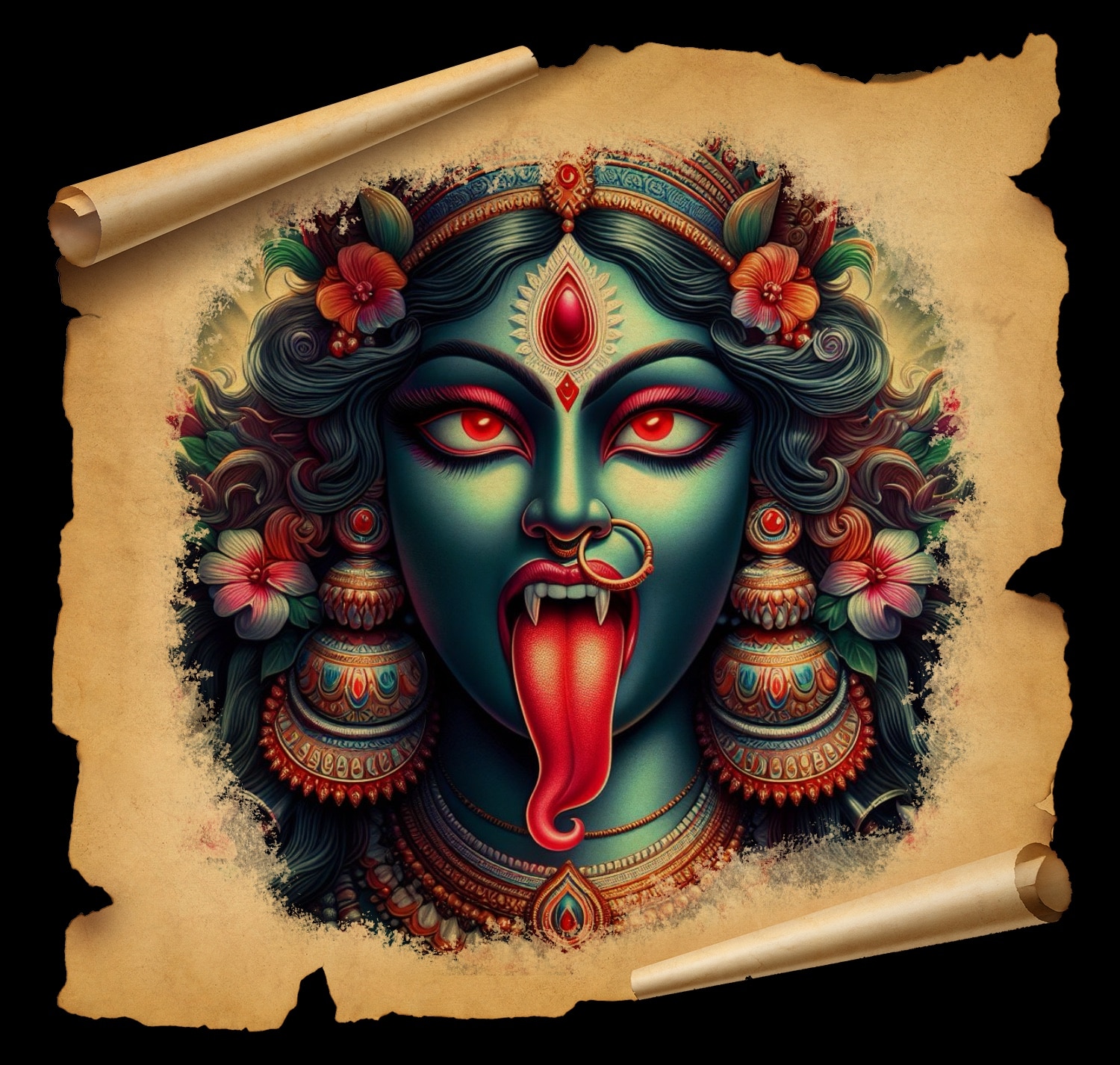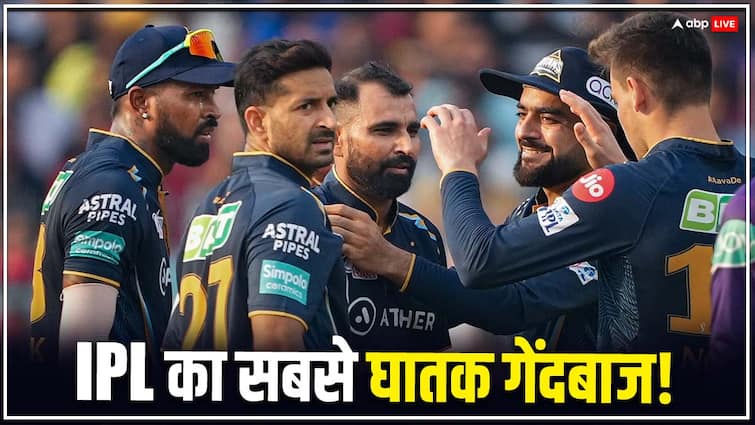In the Shakta tradition that worships Shakti, while on one hand the Goddess is considered to be the basis of the entire universe, on the other hand this tradition also believes that whatever incarnations and forms of super powers have come forward for the welfare of the world, are due to the Goddess only. There are different forms. This belief has become so strong in many places in the scriptures of the Shakta tradition that in the Vaishnav sect, the two main incarnations of Vishnu, Shri Ram and Shri Krishna are said to be the inspiration of Goddess Parashakti herself. The blue cloud of his body is dark in color because he is the incarnation born from the form of Kaalratri form of Goddess Bhagwati. Kaalratri… the form of the goddess who determines time itself, but when there was no time itself, everything was dark, life was nowhere, it was closed somewhere, or behind whatever it was covered, that black darkness. It is nothing but the form of Kaalratri.
This is the reason why we definitely worship the gentle form of Maa Durga or Bhagwati as the presiding deity of Shakti, but the real form of Shakti is the Kalratri form of Bhagwati. The seventh day of Navratri is the day of Goddess Kalratri. The generally visible form of the Goddess is terrifying and destructive. But, in reality, the reality of Goddess Kali is said to be much more esoteric and mysterious than this.
Ekveni Japakaranpura naked purity. Lambosthi Karnikakarni Oil devotee body.
Vampadollasallohlatakantakabhushana. Vardhanamurdhadhvaja Krishna Kalratribhayankari.
The names of all four Vedas are included in the oldest and earliest written documents of India. Even though today we are able to see these Vedas only from a religious perspective, but these are not just religious books, the real knowledge of life and real achievements are contained in the four Vedas. Its gods are not those with miraculous powers, but on the basis of their sacrifice and strength the Vedic people have declared them respectable. These gods are named after Sun, Moon, Rain, Storm or Wind, Fire, Water and Death. That is, the essential elements which the Vedic people considered as life, considered them as gods and worshiped them. This is the reason why mythological gods are somewhat different as compared to Vedic gods.
On the basis of Vedas, gods were described as divine in mythological stories and they became the ones with miraculous powers. Here the word 'Shakti' is important, the word 'Shakti' is used to describe the strength and power of the gods, in the grammatical sense it is synonymous with strength, but in the Vedas and Puranas this word holds so much importance. Apart from Shaiva and Vaishnav, there is another tradition prevalent in the cult tradition of India, which is called Shakta tradition. This Shakta tradition worships the goddess Shakti and has given her names like Bhagwati, Durga, Amba, Bhavani. This Shakti Devi is the reason for the powers of all the gods, in fact, the Shakta tradition says that it is this 'Shakti' Devi, due to whose will the whole world operates.
What is Shakti, what is the Shakta tradition, what is its importance and how it was created in the form of a goddess, all these are described in more detail in the Puranas other than the Vedas, especially in the famous Markandeya Purana of the Shaiva tradition. Is. This description has been called Devi Mahatmya. There are 700 verses in this Mahatmya and that is why it has got its popular name Saptashati. This is called Sridurga Saptashati.
Apart from Shaiva and Vaishnav tradition, there is another theistic branch in India which is known as Shakta tradition. Shakta, that is, people who consider Shakti as their favorite. In this tradition the origin of power is a goddess. Devi means a woman. This woman is the first woman in the universe and the universe originated from her. It is mentioned in Devi Purana that a goddess, the source of power, divided her power into three elements. Creation, development and destruction. These three are Brahma, Vishnu and Mahesh. This power, together with Brahma Tattva, creates, nurtures with development and with the power of destruction, everything gets merged back into it.
Now the basis of the origin of Goddess Kaalratri is that where there is nothing, or nothing is visible, or whatever is not there is darkness, the nature of darkness is black and absence is Kaalratri. This Kalratri helps in creation, development and destruction by taking different forms. Goddess Kali or Kaalratri is a symbol of knowledge, which is filled with bright light of consciousness.
Devi Bhagwat Purana, Markandeya Purana and Durga Saptashati mainly describe the nine divine forms of the Goddess. These nine forms are the main goddesses of nine different days of Navratri. Shailputri, Brahmacharini, Chandraghanta, Kushmanda, Skanda Mata, Katyayani, Kalratri, Mahagauri, Siddhidatri. The seventh goddess in this is Kalratri, who is a gentle form of Goddess Kali. Even though she has a scarf around her neck, a bloody sword and a spear in her hands, still her heart aches for her devotees, but when religion is destroyed and unrighteousness progresses, then due to the anger of this goddess, other angry forms of Kali are created. Come forward.
There are four Navratri in India, two are main, Vasantik or Chaitra Navratri and the other is Sharadiya Navratri. Apart from this, there are two other Gupt Navratri, which are called Ashadhi and Maghi Gupt Navratri. In these Gupt Navratri, ten Mahavidya forms of the Goddess are worshipped. These Mahavidyas include Kali, Tara, Chhinnamasta, Shodashi, Bhuvaneshwari, Tripura Bhairavi, Dhumavati, Bagulamukhi, Matangi and Kamla. Kali is the main Mahavidya in the tenth Mahavidya, that is why in many places you will find that Kali is worshiped for knowledge and wisdom. Nisha Puja, held on the night of Diwali, is also dedicated to Mother Kali, in which prosperity is wished from the lotus form of Mother and knowledge from the Mahavidya Saraswati form of Mother.
Similarly, one form of Mahakali is known by the name of Neel Saraswati. This is the enlightening form of the goddess, which is related to Goddess Saraswati and is worshiped on the day of Vasant Panchami in Bengal, the center of Shakti worship. Great Acharya Chanakya, great poet Kalidas, great poet Magh had the grace of Goddess Neel Saraswati due to which these three personalities had reached the pinnacle of knowledge. A famous character in southern folklore is Tenaliram (real name Pandit Ramakrishna), who was the courtier and jester of King Krishnadevaraya, it is said that he also pleased Goddess Kali and became synonymous with cunning intelligence.
There is a temple of Neel Saraswati Devi in Belwa village located in Katihar, Bihar. It is said that the great Kalidas got knowledge here. In a temple located in Ujjain, Madhya Pradesh, the goddess of knowledge is known as Neel Saraswati. Actually, Mata got this name because on the day of Basant Panchami, Mata is anointed with blue ink. The source of Goddess Neel Saraswati is something like this-
Ghorrupe Maharave is the enemy of all enemies.
Bhaktebhyo Varde Devi Trahi Maa Sharanagatam.
Om Surasuraarchite Devi Siddhagandharvasevite.
Jadyapapahare Devi Trahi Maa Sharanagatam.
Jatajutasamayukte loljihvantakarini.
Drutabuddhikare Devi Trahi Maa Sharanagatam.












